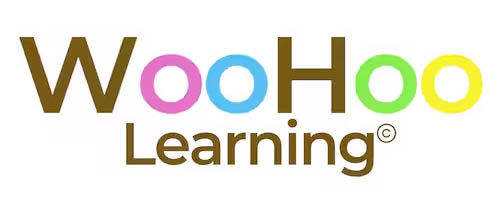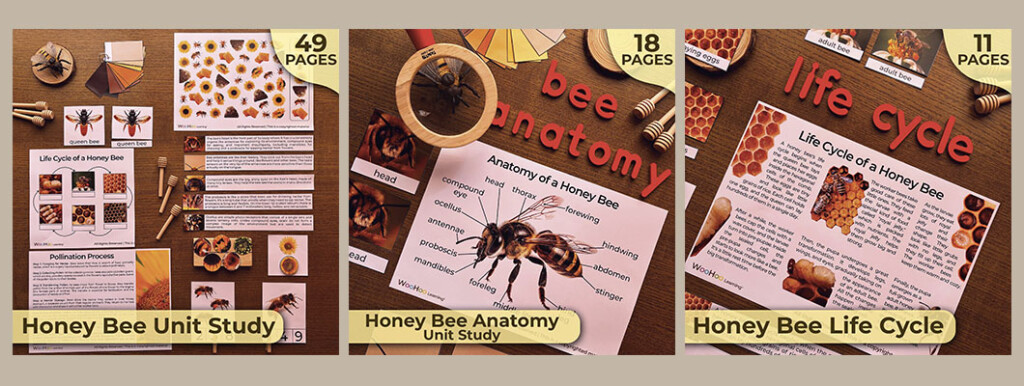Why teach children about bees? It’s simple! Bees are vital to the health of our ecosystems and play a critical role in our food supply. Without bees, many of the foods we enjoy every day, like fruits, vegetables, nuts, and even chocolate, would be much harder to get. Their importance is so great that I believe teaching kids about them is crucial. That’s why I’ve decided to design a specific unit about this amazing insect: the honey bee.
When children learn about how bees help our world, they can better understand how everything in nature is connected and why it’s important to take care of our environment.
If you, like me, are passionate about the Montessori methodology, its approach to teaching, and its learning environment, you’ll love working with my honey bee unit. The way I use my units with my students is very experiential—I bring real objects into the classroom so they can touch, observe, and explore them. This approach, which focuses on the child, encourages learning through experimentation and discovery. Next, I’ll explain how to use this unit with your students.
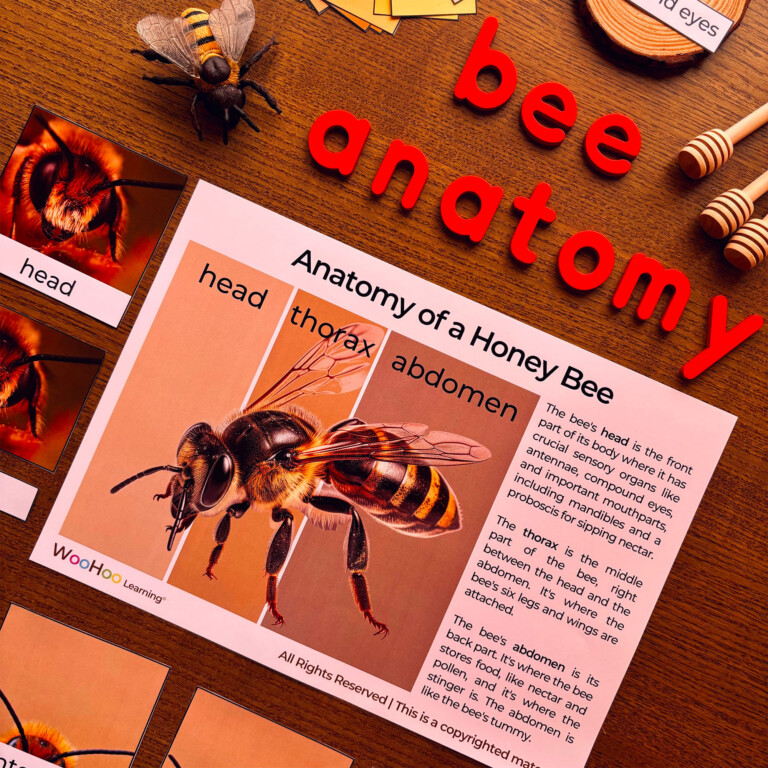
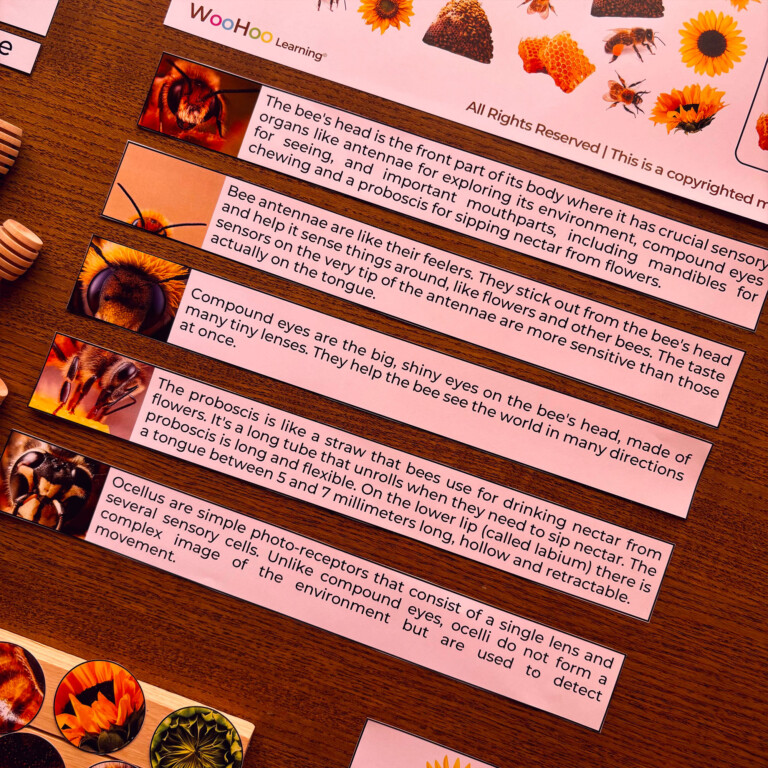
First, I recommend starting with the honey bee anatomy section. Before providing information about the anatomy of the bee, I recommend bringing something eye-catching and engaging into the classroom to spark debate and curiosity among the students. I started this unit by bringing in a natural honeycomb and beeswax sheets to let the students guess what the unit would be about. Before sharing any information, I ask them some guiding questions: “Do you know what this is?”, “What is it used for?”, or “Which insect lives and works here?”.
After the hands-on exploration of the honeycomb and the wax sheets, revealing that it is the place where honey bees live and work, you can move on to learning about its different parts: head; compound eye, ocellus, antennae, proboscis, and mandibles, thorax; forewing, hind wing, foreleg, middle leg, hind leng, and pollen basket, and abdomen; stinger. The labeled poster will be a great tool to introduce these parts. Then, you can use the 3-part cards to help students work on vocabulary and specific definitions.
"At some given moment it happens that the child becomes deeply interested in a piece of work; we see it in the expression on his face, his intense concentration, the devotion to the exercise"
The Discovery of the Child, Maria Montessori
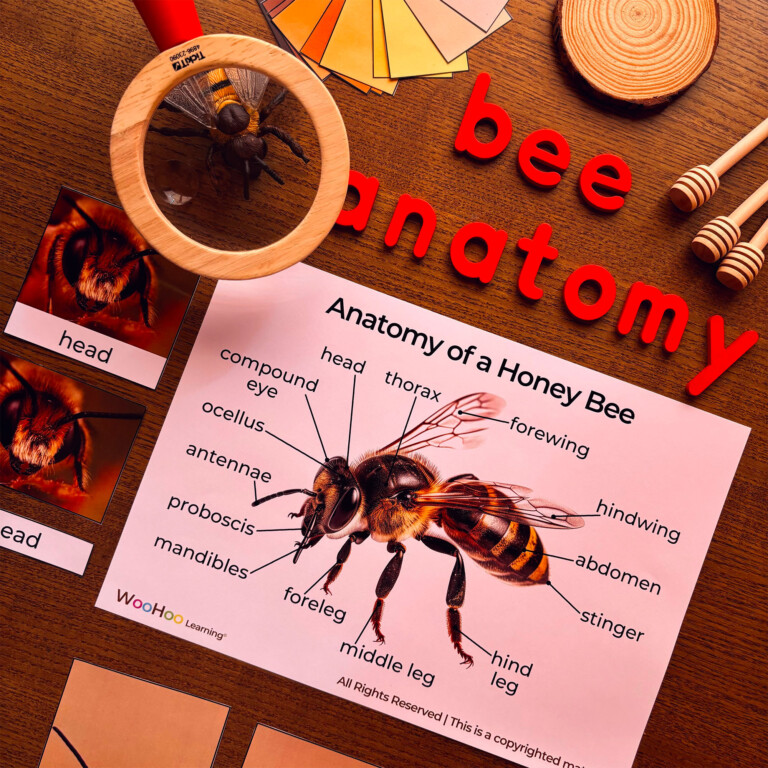
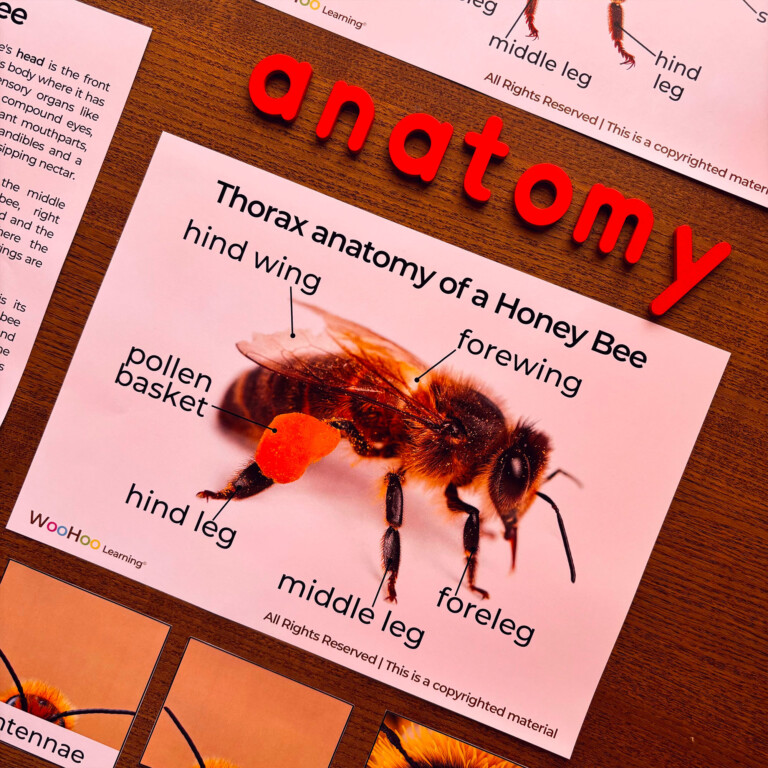
Once the children are familiar with the honey bee and its anatomy, it’s time to delve into the life cycle of this insect. You can start this section by asking questions like, “Where were they born?”, “How do they reproduce?”, “Are they all the same size?”, “Do they live in the hive?”. These questions will help students prepare to learn about the six stages of the honey bee’s life cycle: laying eggs, feeding eggs, larva, pre-pupa, pupa, and adult bee. To support this learning, you can use the definition cards, the 3-part cards, and the 4-part cards with definitions.
Here are some of the elements I’ve used to accompany this unit and their purchase links, in case you’re interested:
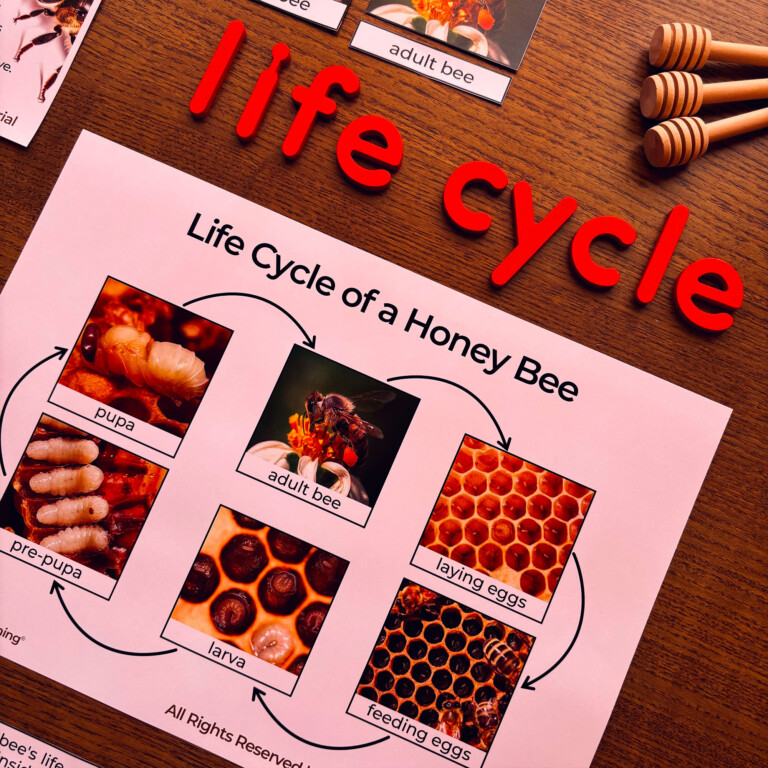
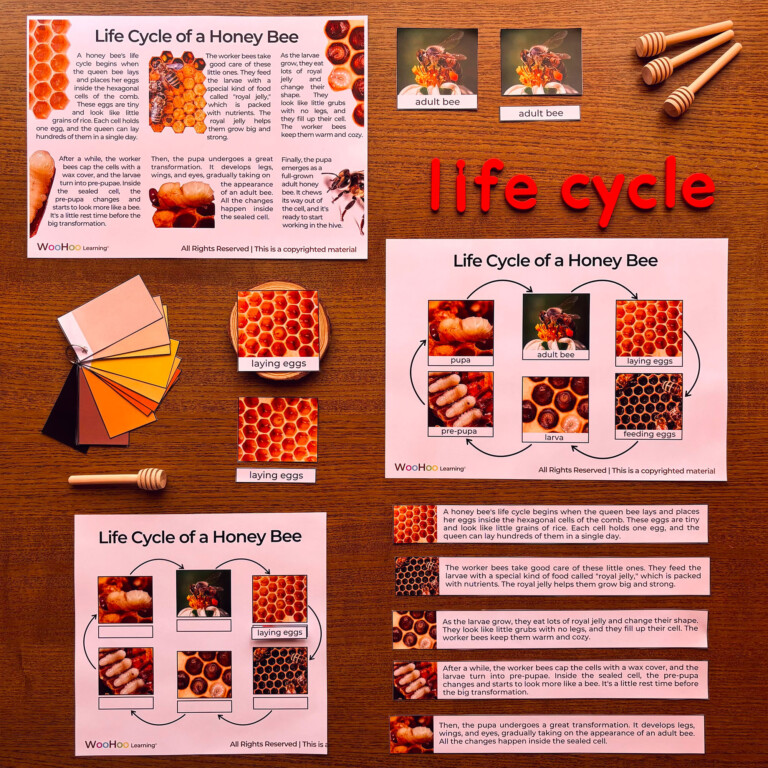
After understanding the anatomy and life cycle of the honey bee, the children will be ready to learn about the hive, the place where bees live and work throughout their lives. It’s important to teach them that there are two main types: natural hives and artificial hives. Before giving them information about each type, you can ask questions like: “How do you think artificial hives are made?” or “How do you think bees build natural hives?”.
It’s also important for them to learn about the different types of bees, which are primarily three: worker bee, queen bee, and drone bee. Each type of bee has a role in the hive, and they will carry out that role throughout their lives.
After learning about the hives, you can conclude this project by giving them extra information about bees. In my unit, you can find information about the pollination process, interesting facts, and more.
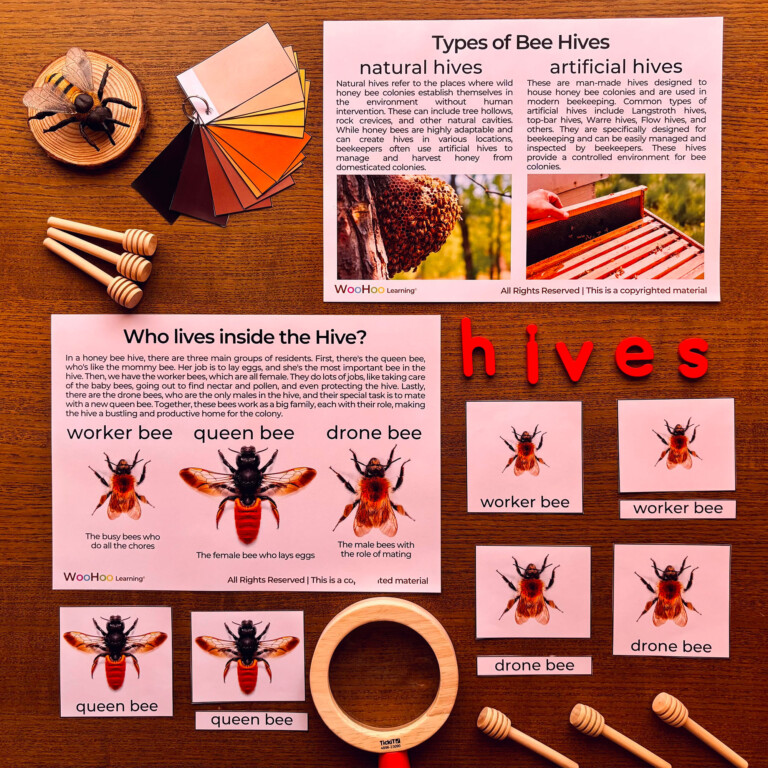
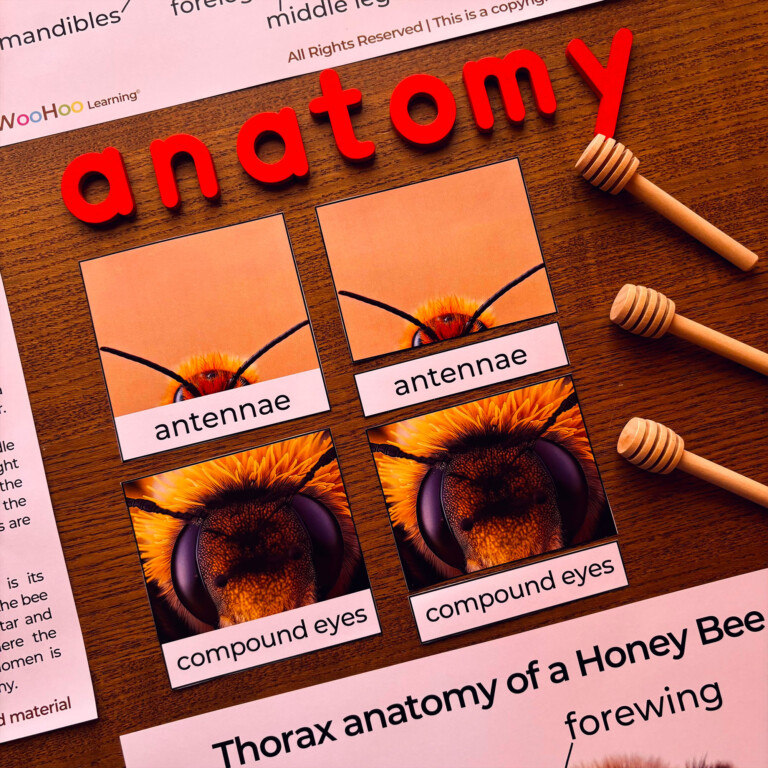
If you’re interested in purchasing my honey bee unit study, you can find direct access to it below. If you only want a part of the unit, don’t worry, that’s also possible. In total, there are 3 different units available: the complete honey bee unit, the honey bee life cycle unit, and the honey bee anatomy.
The complete honey bee unit consists of 49 pages and contains all kinds of information about this insect, including a color pantone, pollination process, types of hives, interesting facts, life cycle, and anatomy. The honey bee anatomy unit has 18 pages and includes posters, 3-part cards, vocabulary cards, and activities. Finally, the honey bee life cycle unit has 11 pages and includes posters, 3-part cards, vocabulary cards, and activities.
*If you feel more comfortable making your purchase on well-known platforms, you can also find my products on other e-commerce sites. Here are the links to my Etsy store and my Teachers Pay Teachers store.
